#Electrician New York City
Explore tagged Tumblr posts
Text

Electrician New York City: Your Local Expert for Reliable Electrical Services!
Looking for a reliable electrician in New York City? Look no further! Our team of experts is here to provide you with top-notch electrical services. Whether you need repairs, installations, or maintenance, we've got you covered. Contact Electrician New York City today for all your electrical needs!"
#residential electrical contractors#commercial electrician#Electrician New York City#licensed electrician new york
1 note
·
View note
Text



Some temp panels I installed for a sh!tty contractor. They placed them on Dollie’s to move them(?!?) Fed by pvc coated BX. Very weird temp system that seems popular. Ask me more if curious. I know it doesn’t look the prettiest, wire was stranded and the insulation wasn’t typical THHN.
2 notes
·
View notes
Text

Guillermo del Toro owns a second home that only has his stuff in it. Though the 59-year-old filmmaker is married with children, he keeps an entire second house to himself and fills it with frightening sculptures, inspiring pieces of art, toys, books, and movies, all of it his own curation. There are no kid’s drawings on the fridge, no side tables picked out by his spouse. It’s his personal playroom. He does most of the upkeep himself after a housecleaner broke the finger off one of his statues. He refers to it as a “man cave” or the “Bleak House” and often spends time alone writing there. Del Toro claims his wife likes it and has always supported his childhood dream house. She also prefers that his horrifying decorations don’t impede the aesthetic taste of the home they share as a family.
Having an entire home as a creative man cave that I am entirely in charge of would sound perfect to me if it weren’t for the fact that owning one home has become a nightmare even the best horror director could not fully capture on film.
I know I am lucky. The stats on Millennials owning their own homes are (if you will) bleak. But whatever I thought was irritating me in the city wasn’t nearly as bad as the physical and mental work required to live in a house. It drains bank accounts and my will to do more than one thing per day. When I was young and lived in New York, I scheduled my days like a CEO or politician: meetings, lunches, podcasts, and stand-up shows all crammed together to the minute as if I could teleport between venues. Now, if Wednesday morning includes a Home Depot run and a painting project, realistically, I’m not doing anything after that until Saturday. The laundry list of what needs to be fixed or maintained in the house grows every day. In the winter, there are rooms I simply don’t use because of a draft I can’t fix. In the summers, the yard becomes something we have to actively fight against lest new trees and mushrooms and 6-foot tall weeds that resemble stalks of asparagus take over everything. The current issue is a dead tree blocking a path to the backyard because wisteria vines are pulling it to the ground. It’s the fastest I’ve ever seen a plant move outside of Evil Dead.
Though we struggle to keep up with our checklists, my wife and I have ambitions for the house outside of general maintenance. We’d like a bigger kitchen, a functional garden, and a fence that looks like a stiff breeze wouldn’t knock it over. The house is fine without these physical flourishes, but the fantasy is always there, nagging whispers in the brain of how nice it could be given unlimited time and resources. That nagging gets into my head about a whole house devoted to my creative dreams.
When I fantasize about what I’d like most if money and time were no object, I find myself thinking about a home theater. Unfortunately, money is an object, and the “fun budget” was consumed by the “necessities budget” a year ago. We already replaced the furnace and AC, dug up tiles in the den, painted nearly every room, replaced doors, one of which was rotting the wood at the edges because it hadn’t been replaced since 1986, the year I was born. Still, the list grows. A dedicated line to the kitchen needs to be added by an electrician so the fuse doesn’t blow whenever I use the toaster and the electric kettle at the same time. The fence and what it nominally protects behind the house needs to be reworked before bunnies consume everything that isn’t a weed. The ancient carpeting needs to be ripped up, bathrooms need to be redone by professionals so my body can actually fit comfortably inside one. Walls need to come down to make living spaces seem less like hallways, and the bay window on the second floor that appears to be melting toward the ground needs to be addressed by a professional architect before the wind rips it off the bedroom wall like a giant scab. After all of that is finished, I’d still need to move into a newer, much bigger house if I want to have a home theater.
Where did the yearning for a private theater come from? Unlike Del Toro’s childhood fantasy of having a house all his own, my wish for this extravagance came much later. I was 30, and I remember exactly how the seed was planted: Zillow. I spent hours on the site, letting the mortgage/insurance calculator tell me what I could afford for the same amount I paid in rent in Brooklyn. On my phone’s screen, I saw a $400,000 mansion in my wife’s hometown outside of Pittsburgh that was the most beautiful house I’d ever seen. It had high wood ceilings and multiple fireplaces to make the whole giant house feel like a cabin. I had 8 bedrooms and a home theater. Imagine, I thought, how good a movie must be in a theater in your own home. Imagine the parties with friends. Imagine movie nights where you force your kids to watch Back to the Future for the first time in a close approximation to the space where you saw it. Playing an old cartoon and a few YouTube’d trailers from the 80s. A little popcorn machine in the corner. Speakers that are way too loud. The dream.
I’ve realized recently, however, how silly the longing for a home theater is for me specifically. I don’t like watching sports at home. I need the atmosphere of screaming people either in the arena itself or in a bar. I need the game to be live. I need to be out among strangers or friends. I feel the same way about movies. I need other people with me, laughing, crying, gasping, clapping.
Read the rest here.
24 notes
·
View notes
Text
A poem by Brian Brodeur

THE CARPENTER'S TALE
There's going to be an accounting. And it'll be the weird stats that come out of somewhere. And this is one of the stranger ones.
—Kerry Breen, This American Life, 8/13/2021
Most of us laughed at being called "essential" in those first weeks of New York's quarantine. We'd grease a hinge or patch a rotten sill,
replacing sunk beams under a snack machine, painting classrooms. Though it felt like cheating, I'd never seen the schools look so pristine.
Then, in April, at our team meeting, our boss clears his throat and his voice softens. Putting down the cruller he's been eating,
he says, "Next week, we start building coffins." One of us laughs. Another spills his coffee. I tell my boss, "Get out of here. Build coffins."
He looks up from his clipboard and glares at me, then gives us all the plans his boss gave him: "We'll be building coffins for the city."
On Monday, I show up at this school gym outfitted as a shop. On cinderblocks, beside the bleachers with the lights turned dim,
our prototype: a six-foot plywood box standing on its end where the feet would be. Above the prototype and scoreboard clocks,
a championship banner's "Victory" had begun to sag where flags of UN nations cling to the ceiling. Under Germany,
we set up cutting and assembly stations, a place where we can urethane the boards. Electricians rig fans for ventilation
and 10 of us plug in extension cords. We stack up drafts of plywood on the floor— a draft is 50 sheets. Our only words
concern the lack of Mets and Yankees scores, how hot the gym gets, who brought Gatorade. We run through 2x4s and they bring more—
wash, rinse, repeat. I mean, we're getting paid, but after so long it occurs to me: My god, they really need this many made?
No one gives us an end. We build 150, stacking them from one side of the gym to the other, five coffins high—no one can see
above the shrink-wrapped freight pallets of them. I back the forklift into the elevator and drive down Concourse near the stadium
and down another street to a tractor trailer. The forklift's so slow people honk at me. Honk at a guy carrying coffins—or
scream at me to move. This goes on three weeks. I find it—I don't know—bizarre, I guess, not one person ever stops to ask me
what I'm doing, everyone obsessed with toilet paper. Then, passing on foot, a guy who speaks Spanish stops to zip his vest
and says, "Morte," finger-slicing his throat. "Sí," I say, and he just shakes his head and walks away. I slam the trailer shut.
Our team built 450 in the end, and there were other teams in other districts across the whole Department of Ed.
No one I tell has ever heard of this. Why would they? Not exactly good PR— Guess what we used schools for. You'll never guess. …
But now that things are waning, more and more I feel alright, like I can let it out. It wasn't war—if it had been a war
we'd know what happened, what it was about, how much we'd lost, what people did out there. I'm sure someone will make a final count,
and we'll deal with each last expenditure, but that's years off, and this is not a war.

Brian Brodeur
More poems by Brian Brodeur are available through his website.
38 notes
·
View notes
Text
Cuphead charcter parents.(head cannon)
Dads
.Brewster Porcelain.
Species: Mug person.
Color: Red.
Age: 32
Date of birth: 3/16/1900
Birthplace: Inkwell. (Isle one)
Occupation: Cab driver.
Kids: Cuphead Porcelain and Mugman Porcelain.
.Matteo Carbone
Species: Human.
Race: European.
Hair color: Black.
Eye color: Blue.
Age: 60
Date of birth: 5/23/1872
Birthplace: New York City.
Occupation: Artist.
Kids: Sebastian Web and Walter Web.
.Richard Lightbug
Species: Firefly.
Color: Purple.
Hair color: Blonde.
Eye color: Brown.
Age: 44 at death.
Date of birth: 6/20/1867
Birthplace: Los Angeles, California.
Date of death: 8/25/1911
Cause of death: Car accident.
Occupation: None.(he lived off of his parents' wealth)
Kids: Mildred Lightbug, Bertha Lightbug, Elizabeth Lightbug, Oliver Lightbug, Anges Lightbug, Rose Lightbug, and Lucy Lightbug.
.Alfred Anteater
Species: Anteater.
Fur color: Gray.
Eye color: Purple.
Age: 62
Date of birth: 1/29/1870
Birthplace: Newark, New Jersey.
Occupation: Wrestler
Kids: Albert Anteater, Abigail Anteater, Alice Anteater, Allen Anteater, Anna Anteater, and Anthony Anteater.
.Foka Petrov
Species: Snail.
Color: Green.
Eye color: Brown.
Age: 58
Date of birth: 6/17/1874
Birthplace: Inkwell. (Isle four)
Occupation: Mob boss.(retired)
Kid: Sheldon Petrov.
.Philippe Lavigne
Species: Pepper shaker.
Age: 59
Date of birth: 1/24/1873
Birthplace: Paris, France.
Occupation: Orchardist.
Kid: Saltbaker Shaker.
.Brown bull
Species: Bull
.Age: 48
Date of birth: 4/7/1884
Birthplace: Inkwell Meatfarms.
Occupation: None.
Kids: Esther Winchester, five other girl calves and three boy calves.
.Comet Saluki
Species: Saluki.
Fur color: Tan and black.
Age: 50
Date of birth: 9/15/1882
Occupation: Pilot.
Kids: Penelope Saluki, and Angel Saluki.
.Brutus Giant
Species: Giant.
Race: European.
Hair color: Ginger.
Age: 55
Date of birth: 2/9/1877
Birthplace: Inkwell. (Isle four)
Occupation: Security guard.
Kids: Helga Giant and Glumstone Giant.
.Otto Buzzman
Species: House fly
Color: Black.
Age: 34 at death.
Date of birth: 7/30/1880
Birthplace: Boston, Massachusetts.
Date of death: 10/5/1914
Cause of death: Eaten by a spider.(not related to Walter in any way)
Occupation: Electrician.
Kids: Garry Buzzman, Larry Buzzman, and Jerry Buzzman.
Moms
Mocha Porcelain
Species: Cup person.
Color: Blue.
Age: 32
Date of birth: 6/27/1900
Birthplace: Ottawa, Canada.
Occupation: Kindergarten teacher.
Kids: Cuphead Porcelain and Mugman Porcelain.
.Edna Web
Species: Spider.
Fur color: Gray.
Hair color: Orange.
Eye color: Yellow.
Age: 60.
Date of birth: 2/6/1872
Birthplace: New York City.
Occupation: Construction worker.
Kids: Sebastian Web and Walter Web.
.Hannah Lightbug
Species: Firefly.
Color: Black.
Hair color: Red.
Eye color: Green.
Age: 44 at death.
Date of birth: 4/13/1867
Birthplace: Malibu, California.
Date of death: 8/25/1911
Cause of death: Car accident.
Occupation: House wife.
Kids: Mildred Lightbug, Bertha Lightbug, Elizabeth Lightbug, Oliver Lightbug, Agnes Lightbug, Rose Lightbug, and Lucy Lightbug.
.Amber Anteater
Species: Anteater.
Fur color: Brown.
Eye color: Orange.
Age: 62
Date of birth: 9/4/1870
Birthplace: Inkwell.(Isle three)
Occupation: Waitress.
Kids: Albert Anteater, Abigail Anteater, Alice Anteater, Allen Anteater, Anna Anteater, and Anthony Anteater.
.Jennifer Petrov.
Species: Snail
Color: Yellow.
Eye color: Light blue.
Age: 58
Date of birth: 7/2/1874
Birthplace: New York City.
Occupation: House wife.
Kid: Sheldon Petrov.
.Mary Shaker
Species: Pepper shaker.
Age: 59
Date of birth: 5/16/1873
Birthplace: Inkwell.(Isle four)
Occupation: Baker.
Kid: Saltbaker Shaker.
.Black cow
Species: Cow.
Age: 48
Date of birth: 11/12/1884
Birthplace: Scotland meat farms.
Occupation: None.
Kids: Esther Winchester, five more girl calves, and three boy calves.
.Rita Saluki
Species: Saluki.
Fur color: White and Black.
Age: 50
Date of birth: 3/21/1882
Birthplace: Edgewood, Florida.
Occupation: Hair stylist.
Kids: Penelope Saluki and Angel Saluki.
.Rhonda Giant
Species: Giant.
Race: European.
Hair color: White.
Age: 55
Date of birth: 6/25/1877
Birthplace: Pembroke, Wales.
Occupation: Optician.
Kids: Helga Giant and Glumstone Giant.
.Gale Buzzman
Species: House fly.
Color: Green
Age: 52
Date of birth: 1/6/1880
Birthplace: Calabash, North Carolina.
Occupation: Nurse.
Kids: Garry Buzzman, Larry Buzzman, and Jerry Buzzman.
#Cuphead#cuphead dlc#mugman#chef saltbaker#moonshine mob#esther winchester#howling aces#glumstone the giant
7 notes
·
View notes
Text
SPENCER'S OC MASTERLIST!
( my friend @spenglercore made one of these and i realized that i need to organize as well so let's go !! )
─────────────── ✦ ───────────────
GHOSTBUSTERS!
── RANDALL "RANDIE" ADDAMS : nightshift secretary for the ghostbusters. unofficial official father to a teenage boy, and suffered the tragedies of summerville, only to return.
── SYDNEY ANNE-SEYMOUR : childhood best friend to egon. works mostly with the electronic voice phenomenon (EVP). managed to save new york from a radio demon.
* (note : both are love interests for egon depending on the fic [which both of them have])
── ATTICUS TAYLOR : works with peck and is absolutely tired of his shit. subtly trying to catch the eye of one ghostbusters secretary.
── ARTHUR "ARTIE" RILEY-HAMMOND : a golden retriever mechanic. he's just happy to be involved with the ghostbusters in any way.
─────────────── ✦ ───────────────
STRIPES!
── REBECCA "STONEFACE" MCGEE : electrician on the C-130. known to be very stoic. tired mom energy but is not afraid to kick someone's ass .
─────────────── ✦ ───────────────
SCTV (SECOND CITY TELEVISION!)
── CASSANDRA "SANDY" LAURENCE (OFFICER FRIENDLY) : former field nurse turned er nurse. a single mother who's honest just trying her best.
Janet Laurence ─ ten year old with tremendous music taste.
── NANCY RIPERTON (A FISTFUL OF UGLY) : a saloon girl with dreams of owning her own boutique. always warned with a pistol at all times.
── JOSEPHINE "JOSIE" DEVEREAUX (PTA MEETING) : aspiring guitar player. seemingly the one that got away ... and then she came back.
Marigold "Goldie" Devereaux ─ sixteen year old hippie with her mother's dreams.
── PRISCILLA "SICILY" PRESTON (ALL OF THE MOE GREEN SKITS) : screenwriter and editor. quiet, mostly wants to be in the background as she is content with it.
#ramisland ocs#oc masterlist#once i have all singular oc profiles they will he linked here i promise
6 notes
·
View notes
Text
1928-2014
By Dr. Kelly A. Spring | 2017; Updated December 2021 by Mariana Brandman, NWHM Predoctoral Fellow in Women’s History, 2020-2022
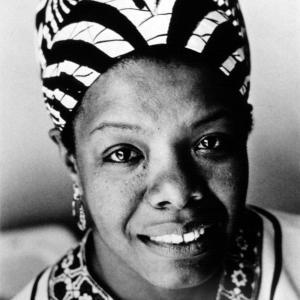
Poet, dancer, singer, activist, and scholar Maya Angelou was a world-famous author. She was best known for her unique and pioneering autobiographical writing style.
On April 4, 1928, Marguerite Ann Johnson, known to the world as Maya Angelou, was born in St. Louis, Missouri. Due to her parents’ tumultuous marriage and subsequent divorce, Angelou went to live with her paternal grandmother in Stamps, Arkansas at an early age. Her older brother, Bailey, gave Angelou her nickname “Maya.”
Returning to her mother’s care briefly at the age of seven, Angelou was raped by her mother’s boyfriend. He was later jailed and then killed when released from jail. Believing that her confession of the trauma had a hand in the man’s death, Angelou became mute for six years. During her mutism and into her teens, she again lived with her grandmother in Arkansas.
Angelou’s interest in the written word and the English language was evident from an early age. Throughout her childhood, she wrote essays, poetry, and kept a journal. When she returned to Arkansas, she took an interest in poetry and memorized works by Shakespeare and Poe.
Prior to the start of World War II, Angelou moved back in with her mother, who at this time was living in Oakland, California. She attended George Washington High School and took dance and drama courses at the California Labor School.
When war broke out, Angelou applied to join the Women’s Army Corps. However, her application was rejected because of her involvement in the California Labor School, which was said to have Communist ties. Determined to gain employment, despite being only 15 years old, she decided to apply for the position of a streetcar conductor. Many men had left their jobs to join the services, enabling women to fill them. However, Angelou was barred from applying at first because of her race. But she was undeterred. Every day for three weeks, she requested a job application, but was denied. Finally, the company relented and handed her an application. Because she was under the legal working age, she wrote that she was 19. She was accepted for the position and became the first African American woman to work as a streetcar conductor in San Francisco. Angelou was employed for a semester but then decided to return to school. She graduated from Mission High School in the summer of 1944 and soon after gave birth to her only child, Clyde Bailey (Guy) Johnson.
After graduation, Angelou undertook a series of odd jobs to support herself and her son. In 1949, she married Tosh Angelos, an electrician in the US Navy. She adopted a form of his surname and kept it throughout her life, though the marriage ended in divorce in 1952.
Angelou was also noted for her talents as a singer and dancer, particularly in the calypso and cabaret styles. In the 1950s, she performed professionally in the US, Europe, and northern Africa, and sold albums of her recordings.
In 1950, African American writers in New York City formed the Harlem Writers Guild to nurture and support the publication of Black authors. Angelou joined the Guild in 1959. She also became active in the Civil Rights Movement and served as the northern coordinator of the Southern Christian Leadership Conference, a prominent African American advocacy organization
In 1969, Angelou published I Know Why the Caged Bird Sings, an autobiography of her early life. Her tale of personal strength amid childhood trauma and racism resonated with readers and was nominated for the National Book Award. Many schools sought to ban the book for its frank depiction of sexual abuse, but it is credited with helping other abuse survivors tell their stories. I Know Why the Caged Bird Sings has been translated into numerous languages and has sold over a million copies worldwide. Angelou eventually published six more autobiographies, culminating in 2013’s Mom & Me & Mom.
She wrote numerous poetry volumes, such as the Pulitzer Prize-nominated Just Give me a Drink of Water 'fore I Diiie (1971), as well as several essay collections. She also recorded spoken albums of her poetry, including “On the Pulse of the Morning,” for which she won a Grammy for Best Spoken Word Album. The poem was originally written for and delivered at President Bill Clinton’s inauguration in 1993. She also won a Grammy in 1995, and again in 2002, for her spoken albums of poetry.
Angelou carried out a wide variety of activities on stage and screen as a writer, actor, director, and producer. In 1972, she became the first African American woman to have her screen play turned into a film with the production of Georgia, Georgia. Angelou earned a Tony nomination in 1973 for her supporting role in Jerome Kitty’s play Look Away, and portrayed Kunta Kinte’s grandmother in the television miniseries Roots in 1977.
She was recognized by many organizations both nationally and internationally for her contributions to literature. In 1981, Wake Forest University offered Angelou the Reynolds Professorship of American Studies. President Clinton awarded Angelou the National Medal of Arts in 2000. In 2012, she was a member of the inaugural class inducted into the Wake Forest University Writers Hall of Fame. The following year, she received the National Book Foundation’s Literarian Award for outstanding service to the American literary community. Angelou also gave many commencement speeches and was awarded more than 30 honorary degrees in her lifetime.
Angelou died on May 28, 2014. Several memorials were held in her honor, including ones at Wake Forest University and Glide Memorial Church in San Francisco. To honor her legacy, the US Postal Service issued a stamp with her likeness on it in 2015. (The US Postal Service mistakenly included a quote on the stamp that has long been associated with Angelou but was actually first written by Joan Walsh Anglund.)
In 2010, President Barack Obama awarded Angelou the Presidential Medal of Freedom, the country’s highest civilian honor. It was a fitting recognition for Angelou’s remarkable and inspiring career in the arts.
This woman was a woman of rape, abuse , and even a victim of racism. She stayed writing in her life as life went on and she did not ask other people to suffer either was well she was a woman of many gift. A big wake up for womens rights and also a good reflection on what is wrong with today's society. People use religion, marriage, laws and even age to determine what is and isn't rape and that is the sick culture all women have to endure. It is never a woman's fault. It happened to me recently and now I am diving back into my music arts. Even research as well . Getting different domains for different topics as well while putting my story out there . It is scary to put it out there because there are so many different things that make writing scary/
#today i learned#til#inventions#biochemistry#women in stem#electricity#mathematics#ocean#environment#sea
7 notes
·
View notes
Text
FEEDBACK LOOP #12: AJ Suede's "Most Black Superheroes"

Hands of onyx—my magnetic field fuck up electronics, I’m shielded—they feel it fusing. Born from nothing, sudden futures.
—ELUCID, “Ghoulie” (2022)
Boogying to my Walkman with the S on my chest.
—Redman, “A Day of Sooperman Lover” (1992)
Charlie Parker was a great electrician who went around wiring people.
—Bob Kaufman, “Fragment” (1959)
Although electricity, like the air around us, seems very impalpable, appealing to so few of the senses, it is yet capable of being measured…
—Lewis Latimer, from Incandescent Electric Lighting: A Practical Description of the Edison System (1890)
1.
Black superheroes harness power outside themselves—channeling it, conducting it—becoming maestros of electro-ultra-magnetics, masters of ceremony. Amiri Baraka assessed the drumming of Sonny Murray, speaking of “his body-ness, his physicality in the music,” concluding that Murray was “a conductor of energies.” AJ Suede has reinvented himself as one Ark Flashington, and he’s cold lampin’. On “South Bronx,” KRS-One describes how “power from a streetlight made the place dark.” A cold lamp is one drained of its energy—its electricity siphoned to illegal sources. Think of New York City going dark during the blackout of July 13, 1977. Think of how the subsequent looting led to audio equipment ending up in the hands of budding creators. Think of the scene in Stan Lathan’s Beat Street from 1984: how they run wires from the abandoned building in the Bronx to a lamppost. The building, burnt out five times by an arsonist landlord collecting on insurance money, is given new life. The electricity stolen from the lamppost powers Kenny’s turntables and gets the party jumping. Jeff Chang details how the Ghetto Brothers played on the block by “plugging their amps into the lampposts.” He quotes Kool Herc divulging how he did the same, sharing a hack he’d learned watching construction workers: “I had a big McIntosh amp…300 watts per channel. As the juice start coming, man, the lights start dimming.” Light and dark merge like the twisting of two frayed wires. Psycho Les promised to “pump more watts than any RadioShack” on the Beatnuts’ “World’s Famous,” and all these examples prove how potent tinkering can be: a life-giving force, a revived pulse.
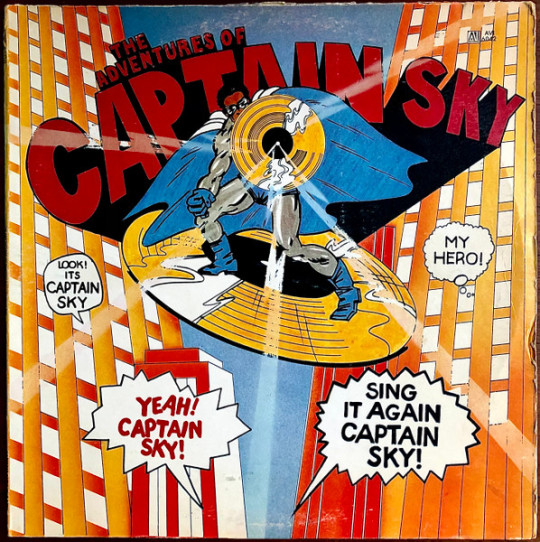
2.
The precedent for suggesting superheroic poetics in hip-hop is congenital. Captain Sky’s “Super Sporm” traveled through the vas deferens (vas def?—mos def!) in 1978, smooth operations and muscle contractions assured its arrival in Big Bank Hank’s “Rapper’s Delight” lyrics in 1980 (“I can bust you out with my super sperm…”), and Kurtis Blow accepted the secretions in 1985 (the same year he told us, coincidentally, AJ is cool—no question). Seminal indeed!
Redman’s “A Day of Sooperman Lover” (1992) is Blowfly-level spoofing—not so heroic or chivalric as the song turns from rescuing a kitty cat to a Crying Game situation where our caped crusader unexpectedly “felt the bozack” of his beloved. Worth noting that when Reggie “dipped into [his] Sooperlover suit” it was accompanied by a “quick flash.” The rendezvous might’ve been chaotic but it was no Black Steel in the Hour of Chaos. Suede needs that steel to be ultra-conductive—something like Tricky’s “Black Steel” rendition. Something similar to “The Adventures of Grandmaster Flash on the Wheels of Steel” (1981). Flash’s early opus of the scratch and prismatic turntablism relied on disassembly of The Official Adventures of Flash Gordon (1966) record as much as it did disco data and funk fodder. Look up in the sky—yeah, above the clouds like Gang Starr in ’98, with Preemo pulling from Superman: The Man from Krypton, a 1978 children’s record.

The fixation probably apexed with the Last Emperor’s “Secret Wars.” “What if I had the power to gather all of my favorite MCs,” he proposed, “with the illest comic book characters and they became archenemies?” The original writing and recording of “Secret Wars” dates back to 1995 and ’96. Last Emp told David Ma that MCs and superheroes both operate as “modern day mythology.” Hip-hop heads decolonized comic conventions like Fanon, placing Black Masks over White Skins: Jean Grae, Ironman, MF DOOM, et cetera, and it don’t stop, and it can’t stop.
3.
The fact that most Black superheroes use electricity speaks to a historical tendency for [particularly non-Black] comic writers and illustrators to codify stereotyped representations of identity. AJ Suede, though, celebrates the commonality of so many Black superheroes with an emphasis on their weaponizing of electricity. Purveyors of potent defenses (a double portion of protection, ELUCID would say) whose Main Source of power derives from an [ec]static breaking of atoms.
Suede deads the myth of superpredator and elevates a superhero mythopoeia super-suited to an Age of Incendiary Devices. He assembles a team (in hip-hop we might call it a crew) of comic book characters to demonstrate that most Black superheroes use electricity. Whether he presents this as a tired trope or point of pride is left ambiguous, but I prefer to think of it as a salute to the commonality.
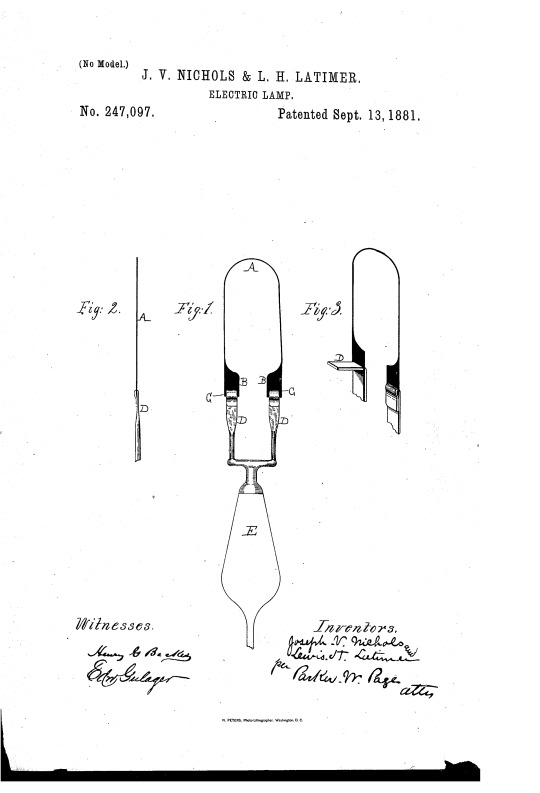
4.
AJ Suede holds a “couple of lanterns, lighting the path,” and the desire path leads us to Edison’s Lab in Menlo Park, New Jeruzalem. It was there that Lewis Latimer took eight steps to perfecting the carbon filament after Edison caught the L. Latimer literally wrote the book on electric light: Incandescent Electric Lighting: A Practical Description of the Edison System. History, as it goes, has made Latimer the lesser-known, but we can measure his impact in such luminaries as Bigg Jus. “I blow mics like filaments,” Jus rapped on CoFlow’s “Silence.” “I’m tungsten light within that causes something.” Something. What it causes must be too ineffable. Suede describes his “armor like tungsten, wolfram, / Wonder who indestructible.” Last Emp teased, Inconceivable? Unbelievable? On “Electric Relaxation,” Q-Tip claimed to be “stronger than Teflon.” We can thank Lewis Latimer for the threaded socket as well. See it on the cover of the Project Blowed compilation from 1995: a bare bulb hanging down, suspended in a white void, hinting at the empty-headed ingenuity of the most virtuosic freestyles to emerge from the MCs serving the Good Life. “There’s something special inside of my mental cargo vessel,” Aceyalone raps on “I Think,” “and it runs on lethal, ethyl methane, profane, / Kinda like a flux capacitor.” He thinks—bright bulb idea sharer. 88 MPH stream-of-consciousness thoughts. 1.21 gigawatts powered by either plutonium or hooked pole + lightning bolt.

5.
Granville T. Woods got labeled “Black Edison,” but—actual fact—Thomas Alva should’ve been dubbed “White Woods.” Edison tried to jack Woods’ steez, claiming ownership (as oppressors are wont to do) to his patents, but Woods was having none of that litigious noise and won in court. Edison wanted credit for a creation that wasn’t his, but Woods was like, “That goddamn credit? Dead it, / You think a white inventor paying you back?—shit, forget it!” With his Synchronous Multiplex Railway Telegraph, Woods equipped trains with magnetic forces for the purpose of communication long before DONDI and FUTURA were bombing ’em.
And what was Edison up to in the meantime? He produced an 1896 film, The Watermelon Eating Contest, which featured “two of the colored gentry eating melon on a wager.” In 1905, he promulgated a worser racial cinematic vision with the Edwin S. Porter-directed The Watermelon Patch, which depicts a melon heist by “darkies” and a pursuit of the thieves by scarecrows-turned-skeletons. Subsequently, we see bloodhounds and cakewalking. On “Most Black Superheroes,” AJ Suede circumvents the mob. He moves “left with the science, but right with the math.” Red-right, white-left, Buck 65 rapped in 1999, memorizing his RCA cables. The wrath of Suede’s math is on par with Jeru’s—he knows how and when to plug in, to plug tune, when to summon storms from the grass surrounding the watermelon patch.

6.
That AJ Suede is singing about Black superheroes distracts from his own heroics. Behind his “Ark Flashington” alter ego, Suede gathers the “harvest abundant [for] feeding the village.” The pun on “arc” weds his electrifying powers to “ark” in a Noachian sense. “Ark,” from the Latin arca, meaning “chest,” alludes to a coffer for storing secrets (abilities, identities) or a chest in an anatomical or figurative sense: the seat of emotional strength and fortitude. The “ark” in Ark Flashington, there-to-the-fore, is the chest from which AJ Suede’s arcane language springs. As purple lightning flashed and purple haze lifted, Cam’ron rapped on 2004’s “More Gangsta Music” about “walk[ing] around like [he’s] got an S on [his] chest.” He had the “Tec on [his] left,” but it’s not a TEC-9 in Suede’s case; it’s a high-voltage technology.
7.
As AJ Suede welds words together, there’s the constant risk of an arc flash—something, as his loyal listeners, we’d masochistically welcome. The way he tangles spools of l’s (“billionaire”; “still feel”) and coils conductive short-u’s (“deductibles”; “government”; “clusterfuckable”; “but”; “wonderful”) leaves us feeling vaporized. (We caught the toxic fume vapors!)

As such, we should come correct in PPE. Contact artist Lonnie Holley to commission a replica of his “African Mask” (2004)—a welder’s mask, actually, wreathed by a radial tire. Ribbons of rubber and sockets hanging like talismans and outlet boxes. This assemblage of scraps links [literally] the millennia-old metallurgy in Nigeria with the 20th century segregated workforce at Sloss Furnaces in Birmingham. Rockin’ the protective Holley headpiece will have you “feel[ing] wonderful,” as Suede says. You’ll be ready to drop a gem on ’em or, conversely, run the joules. You’ll look like the masked figure on the cover of Ark Flashington—all psychedelic oversaturation and electromagnetic energy exuding outward. Replace the S on your chest with the same inflammable material emblem from Massive Attack’s debut—embrace a “Safe from Harm” simmering beneath the surface of your epidermis.
8.
“Alternating current in the blood gets channeled,” AJ Suede raps as he morphs verb into noun. You’re sitting on your sofa alongside Canibus tuning into Channel Zero, but the cathode-ray tube is on the fritz. Screen all fulla snow. Suede juxtaposes the light and dark of alternating current electricity in our TV sets and—like David Lynch—reveals the light and dark media representations of humanity.

The current carries “through the fingertips and eyes, / Talking to the skies” like Lynch settles his camera on #6 utility poles. Over the course of his career, the Twin Peaks director has been partial to electricity. “I don’t know why all people aren’t fascinated with it,” he said in 2006. “It makes beautiful sounds, and it makes a lot of times some incredible light. It runs many things in our world, and it’s beautiful. It’s sometimes dangerous, but it’s magical. It’s such a power….” He speaks to the ethos of Ark Flashington, and Suede’s “Most Black Superheroes” delves headlong into the racial components. Sure, Lynch has the soot-blackened faces of the Woodsmen (“Gotta light?” one infamously asks). He hideously birthed the “jumping man” (leaping tall buildings in a single bound…) above the convenience store in Fire Walk With Me (1992). The “jumping man” is acted by Carlton Lee Russell, a Black man, though he wears a mask of white plaster. A second Black man, credited fittingly as “the electrician,” is also present in that surreal scene. But these racial undertones are just that—rarely discussed contexts secondary to Lynch’s infatuation with the direction of electron flow and the nature of good and evil. No more than minstrelsy of the manic and unhinged, if that. AJ Suede sacrifices everything on the gallows-like altar of a transmission tower in order to get us closer to overstanding.
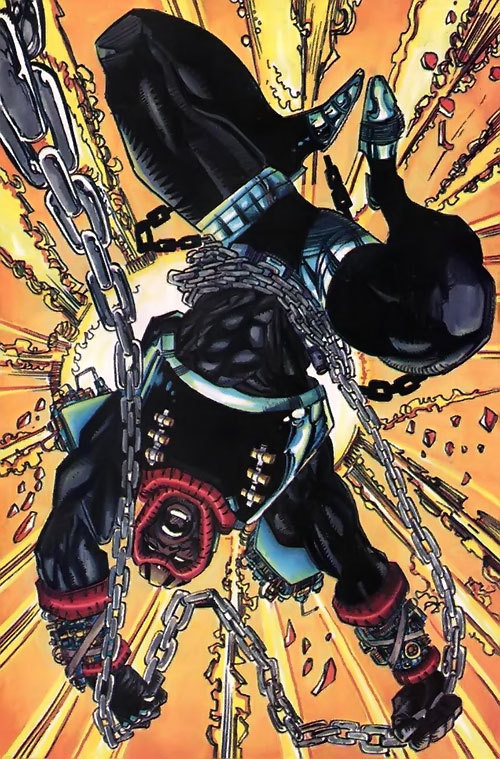
9.
Remember how they treated Black soldiers after Nam? By simply raising the question, AJ Suede raises hell and reminds us. “Never give help,” he says, subverting the saves-the-day super duty tough work of your typical superheroes, “’cause they don’t give a damn.” History is a weapon which can be used to recognize the difference between a worthy rescue and an informed recusal.
In Seize the Time (1970), Bobby Seale’s account of his days developing the Black Panther Party, a current navigates through his narrative—“current” in both senses: contemporaneous to his volatile times and the flow of charged particles. Writing at the height of the Black Power movement [calculate Black power in wattage], he notes that our “modern, highly technological society” includes pervasive “electronic surveillance,” in addition to and aiding the efforts of “cops armed and equipped for overkill.” Electricity found its path into his earlier employment struggles, too. “I worked at Kaiser Aerospace Electronics near Oakland,” he writes. “It involve[d] testing for microscopic cracks in metals by a complicated chemical and magnetic process.” Despite mastering the trade and finding the knowledge rewarding, he quit a little over a year later because he conscientiously objected to where the company was moving: “[T]he war was going on and I felt I was aiding the government’s operation.” Government clusterfuckable, in Suede’s words. Later, as Seale was transported by US Marshals across state lines, he spent a layover in a Salt Lake City lockup, what he refers to as “a completely electronic jail.” The future shock of his detainment, with its “doors [that] opened and closed electronically”—absent the necessity of any human touch—reminded him of a “streamlined concentration camp.” “I was on a political charge,” he writes [my emphasis]—quarks, protons, and electrons notwithstanding—and ultimately this seeming scientifikal fact limits his options. “If I escaped,” he reasoned, “everybody would believe I was guilty of all that jive, those trumped-up charges. At the same time I knew darn well the power structure is going to move and do everything they can to try to convict me and railroad me into prison and the electric chair.” And there’s no glory in damning yourself to the living/dying embodiment of Eric Haze’s iconic Death Row Records logo, is there?
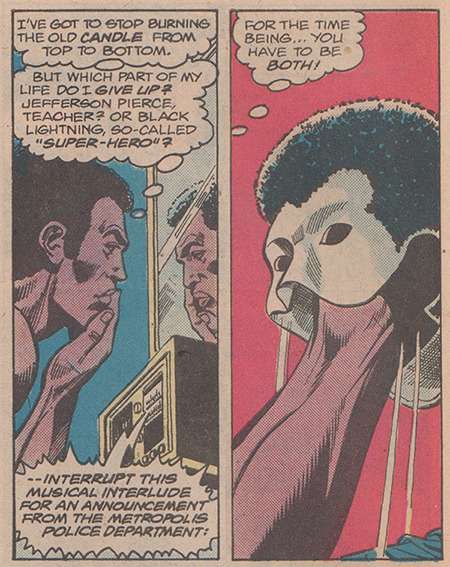
10.
Black people must ultimately come to realize that such coalitions, such alliances have not been in their interest…[I]n fact, the whites enter the alliance in many cases precisely to impede that progress.
—Kwame Ture and Charles V. Hamilton, Black Power: The Politics of Liberation in America (1967)
Ture and Hamilton point to labor unions to emphasize “the treacherous nature of coalitions.” As unions achieved collective bargaining rights nationwide, Black workers experienced “deterioration.” In the 1940s, the International Brotherhood of Electrical Workers (Suede’s new crew name, if I had my way) got their victory, but Black laborers were contracted out of the union. Ture and Hamilton quote Myrna Bain: “The excuse was advanced that, since their union contract specified ‘whites only,’ they could not and would not change this to provide continued employment for the Negroes who were at the plant before the union was recognized.”
“Fuck what you got,” AJ Suede raps, liberals, well-wishers, and allies “can’t change spots.” In fact, it’s not a matter of “can’t”—they won’t change spots. The only math they know is a zero-sum game. “After handshakes people still change plans,” so like Public Enemy said, you can’t truss it.
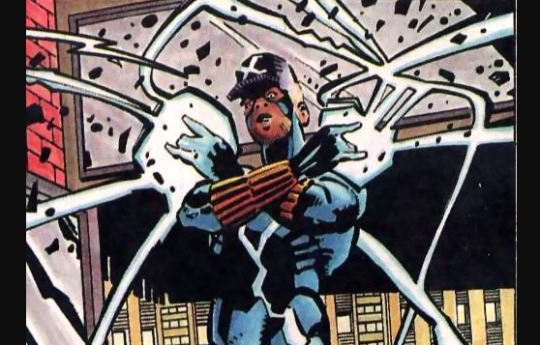
11.
What recourse does AJ Suede have? He signals the skies and gathers the [Black] powers available to him. He recruits Dwayne McDuffie and Robert L. Washington III’s Static, giving props to Virgil Hawkins’ namesake static bolts that sizzle and criss-cross into a Malik El-Shabazz “X” on the front panel of his cap. He hangs a banner from the 1994 inaugural issue: YOU DON’T START NONE THERE WON’T BE NONE. Time is illmatic, of course, and Nas tells us he “keep[s] static like wool fabric”—linking electricity, beef, and even “the kinkiness of Black people’s hair.”
Suede calls upon Black Lightning, tapping his ability to ionize illbient beats and throw up a force field before fists. He brings in Black Vulcan from the Super Friends in case they need to spot-weld the Fugees' "Ready or Not" submarine (on loan). He looks to da baddest bitch—no, not Trina (though she fellates at a pace “like lightning”)—but to Storm, relying on her to psionically and atmokinetically keep the peace. Hardware heads over with metal alloys looted from Alva Industries. In the same way Milestone Comics diverged from the prevailing archetypes and tokenism of Black superheroes, AJ Suede builds a posse that can apply pressure through a low-pass filter or phaser.
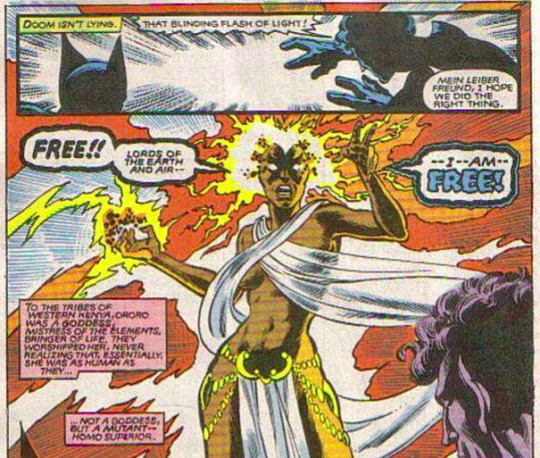
“Most Black Superheroes” survives on the subtle cracking and clicking of the Geiger counter in a tick-tock Doomsday clock loop rendered rhythmic: a molecular metronome. Drums tapped out on a cellar circuit breaker rather than an SP-404. Yes, most Black superheroes use electricity, and AJ Suede turns his sine waves square through a fuzz pedal. He abuses the tube amp until he achieves Electro Harmonix. He regulates the barometric pressure between Seattle and Bristol, rhyming at a rainy-day downtempo BPM, tautens the tripwire, and sends the circuit breaker tripping. His woofers thud the trunk of the jeep with melanated melankolic bass tones. “Most Black Superheroes” is an electric boogaloo of AJ Suede’s own mad scientist invention—a hip-hop park jam of resistance and Vedic possibilities where ohm meets om.

Images:
David Lynch, The Factory Photographs, 2014 (detail) | Captain Sky, The Adventures of Captain Sky, album cover (1978) | Superman: The Man From Krypton, Peter Pan Records (1978) | Lewis Latimer, “Electric lamp” (with Nichols, Joseph V.), patent (1881) | Project Blowed compilation, album cover (1995) | The Watermelon Patch, screenshot, Edison Films (1905) | Lonnie Holley, African Mask (2004) | David Lynch, “Electricity in Hand and Home” | Hardware, appearing in Milestone Comics (issue unknown) | Black Lightning in Justice League of America #174, (Jan. 1980) | Static, Issue 1, Dwayne McDuffie and Robert L. Washington III, DC Comics (May 4, 1993) | Storm, appearing in Marvel Comics (issue unknown) | David Lynch, The Factory Photographs, 2014 (detail)
8 notes
·
View notes
Text

GROUP VERSE: #CENTRALPERK
what was that noise from apartment 2b? or better yet what is that smell coming from 1a? In this apartment building you almost never know . whether you are new to the city & building your career or you've wandered here to find love & fulfillment - central perk apartments have it all ! and who is to say your group of best friends or love of your life isn't right down the hall ?
this is a discord / dashboard loosely based f.r.i.e.n.d.s group verse ! we will be accepting muses from all fandoms but they will all have to adapt to human species !
no ooc drama / cliques / problematic vibes will be tolerated .
you may have as many muses as you would like as long as you feel you can handle them .
18+ only both characters & ooc as I do not write with muns who are under 18 .
all muses will be human .
to join please send info via DMs to @wysteriafaded !
welcome to new york chandler bing ( he / him | dylan o'brien ) ! as a twenty-three year old accountant you make the city look bright . we hope all your dreams come true ! ( @wysteriafaded )
welcome to new york nathaniel archibald ( he / him | chace crawford ) ! as a twenty-one year old political intern you make the city look bright . we hope all your dreams come true ! ( @wysteriafaded )
welcome to new york haley james ( she / her | alba baptiste ) ! as a twenty-two year old aspiring musician you make the city look bright . we hope all your dreams come true ! ( @wysteriafaded )
welcome to new york nini salazar-roberts ( she / her | olivia rodrigo ) ! as a twenty year old musician you make the city look bright . we hope all your dreams come true ! ( @inspotlight )
welcome to new york ricky bowen ( he / him | joshua bassett ) ! as a twenty year old musician you make the city look bright . we hope all your dreams come true ! ( @melodyplucked )
welcome to new york lucy gray baird ( she / her | rachel zegler ) ! as an eighteen year old musician you make the city look bright . we hope all your dreams come true ! ( @wysteriafaded )
welcome to new york roff "riff lorton" lautmann ( he / him | mike faist ) ! as an eighteen year old mechanic / electrician / general handyman you make the city look bright . we hope all your dreams come true ! ( @angelsweeps )

muse name (s) :
muse job :
age /pronouns :
will your muse have roommates ? if so are you open to co-ed or would you prefer only male / female ? we will match roommates randomly . if you wish to be roommates with somebody who is joining in particular please let me know !
muse faceclaim ( s ) :
9 notes
·
View notes
Text
Comprehensive Electrical Services in Long Island by AllWays Electric Corp.
Comprehensive Electrical Services in Long Island by AllWays Electric Corp.
Since 1971, AllWays Electric Corp. has been a trusted provider of electrical services across Long Island and the five boroughs of New York City. With over 220,000 successfully completed jobs, we have established ourselves as a preferred choice among homeowners, building managers, restoration contractors, builders, and insurance companies.

Our Services
We offer a wide range of electrical services to meet the diverse needs of our clients:
Residential Electrical Services: Our team provides reliable solutions for all your home electrical needs, ensuring safety and efficiency.
Commercial Electrical Services: We deliver top-notch electrical solutions for businesses, ensuring minimal downtime and maximum safety.
24/7 Emergency Electrical Repairs: Our experts are available around the clock to address any electrical emergencies promptly.
Why Choose AllWays Electric Corp.?
Experience: With over five decades in the industry, we bring unparalleled expertise to every project.
Licensed and Insured: We hold all necessary master electrician licenses across Long Island and NYC, ensuring compliance with local codes and standards.
Prompt Service: With a fleet of 36 service vehicles, we offer service within one hour to most locations, ensuring timely assistance when you need it most.
Customer Satisfaction: Our commitment to real service and real value has earned us numerous five-star reviews from both new and returning customers.
Contact Us
For dependable electrical services in Long Island, trust AllWays Electric Corp. Contact us today to discuss your electrical needs or to schedule a service appointment.
Phone: (631) 236-2200 or (631) 236-2179
Website: https://allwayselectriccorp.com/
Experience the difference with AllWays Electric Corp., where quality and customer satisfaction are our top priorities.
0 notes
Text
Bathroom Renovation NYC: A Step-by-Step Guide to Transforming Your Space
A well-designed bathroom enhances both the functionality and aesthetics of your home. Whether you're upgrading for personal comfort or increasing your property's value, a bathroom renovation requires careful planning and execution. This guide will walk you through the essential steps to transform your space seamlessly.
Step 1: Plan Your Renovation
Before diving into the renovation, it's crucial to establish a clear plan. Consider the following factors:
Budget: Determine how much you're willing to spend, factoring in materials, labor, and unexpected costs.
Design Preferences: Decide on the style, color scheme, and fixtures that match your vision.
Timeline: Set realistic expectations for the project duration.
Hiring a professional contractor in bathroom renovation NYC projects can ensure a smooth and stress-free process, especially in apartments where space and plumbing restrictions may exist.
Step 2: Obtain Necessary Permits
New York City has strict regulations regarding construction and remodeling. Depending on the scope of your project, you may need permits from the Department of Buildings (DOB). If structural or plumbing changes are involved, obtaining approvals ensures compliance with safety codes. Your contractor can assist with this process.
Step 3: Demolition and Preparation
Once permits are secured, the demolition phase begins. This involves:
Removing old tiles, fixtures, and cabinets.
Checking for water damage, mold, or plumbing issues.
Ensuring the electrical wiring is up to code.
Proper preparation is essential for a smooth transition to the next steps.
Step 4: Plumbing and Electrical Work
Upgrading plumbing and electrical systems is a fundamental part of bathroom renovation NYC projects. This step involves:
Installing new pipes and drains if needed.
Upgrading electrical outlets to meet modern safety standards.
Adding new light fixtures or ventilation systems.
A licensed plumber and electrician can handle these tasks efficiently, ensuring long-term functionality and compliance with city regulations.
Step 5: Install Flooring and Walls
Once the foundational work is complete, it's time to install new flooring and walls. Some popular options include:
Tiles: Durable and moisture-resistant, available in a variety of styles.
Vinyl Flooring: A cost-effective alternative that mimics natural materials.
Waterproof Wall Panels: Ideal for modern and minimalist designs.
Proper waterproofing techniques are crucial to prevent future damage.
Step 6: Choose and Install Fixtures
Selecting high-quality fixtures can elevate the bathroom’s look and usability. Consider:
Bathtubs and Showers: Walk-in showers with glass enclosures are trendy and space-efficient.
Vanities and Storage: Floating vanities provide a sleek appearance and extra floor space.
Toilets and Sinks: Opt for energy-efficient and water-saving models.
A well-chosen combination of these elements ensures both style and practicality.
Step 7: Add Lighting and Accessories
Lighting plays a significant role in setting the mood of your bathroom. Consider:
Task Lighting: Ideal for mirrors and vanities.
Ambient Lighting: Soft overhead lighting for a relaxing atmosphere.
Accent Lighting: LED strips or under-cabinet lighting for added elegance.
Adding mirrors, towel racks, and decorative elements will give the space a finished look.
Step 8: Final Touches and Inspection
The last step involves inspecting the renovation for any minor adjustments. Ensure:
Plumbing and electrical systems function correctly.
Fixtures and tiles are securely installed.
The space is clean and ready for use.
A final inspection by a contractor or a city official may be required to confirm compliance with building codes.
Conclusion
A well-executed bathroom renovation NYC project can significantly enhance your home's comfort and value. By following these steps—planning, obtaining permits, upgrading essential systems, and installing high-quality fixtures—you can achieve a stunning and functional bathroom. Whether you hire professionals or take a hands-on approach, attention to detail will ensure a successful transformation.
0 notes
Text
Chandelier Installation: Why You Should Hire an Electrician in New York City?
Chandeliers are a great way to add warmth and beauty to a home. They transform places with opulence, style, and sophistication. Apart from that, unlike other lighting fixtures, chandeliers make zero damage to the walls as they don’t require drilling holes and hang gracefully over the ceiling. Visit: Chandelier Installation: Why You Should Hire an Electrician in New York City?

1 note
·
View note
Text


Does anyone know what’s wrong with this picture? When core drilling a hole make sure to pay attention to what might be on the ceiling below you. The A Journeyman who did this was always careless and wreck less. Mind your surroundings. Stay safe.
0 notes
Text
What Are Some of the Most Common Causes of Falls from Scaffolds?

Falls from scaffolds are among the most common causes of catastrophic or fatal construction-related injuries. A number of construction accidents that result in major injuries in New York City involve workers falling from scaffolds. According to the Occupational Safety and Health Administration (OSHA) more than 65 percent of laborers and workers in the construction industry, from painters and electricians to bricklayers, demolition workers, ironworkers and steelworkers – use some type of scaffolding to do their jobs. These jobs are often performed from heights, which means they are at risk of falling.
Falls from Scaffolding
Scaffolding is temporary support structure that enables workers to reach required heights while working on construction projects. On the one hand, scaffolding offers the convenience of accessing hard-to-reach heights and places as opposed to working from ladders, leaning over edges and stretching overhead. However, there is a definite risk of a fall-related accident, especially when building owners, general contractors, and contractors ignore safety regulations when working on a scaffold.
What Causes Scaffolding Accidents?
Here are some of the most common causes of scaffolding accidents that involve falls and serious injuries:
Lack of sufficient training: Many workers are not provided the job training and safety training they need to do their work in a safe and efficient manner. In New York City, a number of immigrant construction workers are not provided training materials in their native languages, which makes it difficult for them to understand safety procedures and protocols. It is the duty of building owners, general contractors, and contractors to ensure that all workers are properly trained.
Inadequate protection: Companies are also required to provide workers with fall protection and safety devices such as goggles to prevent debris from entering a worker’s eyes, harnesses, safety nets and guardrails. OSHA requires that fall protection be provided at elevations of four feet in general industry workplaces, five feet in shipyards, six feet in the construction industry and eight feet in longshoring operations. In addition, OSHA requires that fall protection be provided when working over dangerous equipment and machinery, regardless of the fall distance.
Poor scaffold construction: It is critical that a professional oversees the construction of scaffolding to ensure that it is safe and compliant with OSHA standards. However, it is common for a number of companies and contractors to use shoddily constructed scaffolds that lack safety features. A safety specialist is required to check and approve all structures including scaffolding before workers begin the job. When a scaffold is constructed with substandard materials, or in such a way that it is unable to withstand the weight of the workers, it may cave in or collapse. Weak planking, failures at attachment points, parts failure and defective equipment are all commonly cited as causes for scaffolding collapses.
Environmental factors: It is the job of supervisors at a construction site to keep track of weather conditions such as high winds, which may cause scaffolds to collapse and lead to serious injuries and fatalities. Work should be suspended or stopped when dangerous conditions pose such hazards to workers on scaffolds. Work should be resumed only when conditions improve.
Workers who are injured in construction accidents may be able to seek workers’ compensation benefits, which typically cover medical and drug expenses and a portion of lost wages. Families that have lost loved ones in a construction accident may be able to seek death benefits. In addition, workers and their families may be able to file a third-party lawsuit for substantial money damages against a number of parties, and therefore have two sources of compensation.
Third-party claims are filed against parties other than the employer or co-employees and may include general contractors, sub-contractors, building owners, managing agents, construction companies, etc. Injured victims can seek compensation for damages including, but not limited to, medical expenses, lost income and benefits, hospitalization, cost of rehabilitative treatment, permanent injuries, disabilities, past and future pain and suffering, etc.
If you have suffered injuries in scaffolding accident, the experienced scaffolding collapse lawyers can help you better understand your legal rights and options, and also fight hard to recover just compensation for you.
#new york construction accident attorney#construction#scaffolding#attorneys construction#scaffolding accident#lawyer#ny lawyer#law firm
0 notes
Text
How Cost Estimating Services Address Labor Cost Variations Across Regions and Countries
Labor costs are a crucial component of any construction, manufacturing, or service-based project. However, these costs are not uniform; they can vary significantly depending on the region, country, and even the specific locality within a country. This variation can be influenced by numerous factors such as local wage standards, labor laws, skill levels, and even the availability of qualified labor. Accurately estimating labor costs across different regions or countries is a challenge for businesses and project managers, but it is an essential part of creating a comprehensive and accurate budget.
Cost estimating services play a vital role in addressing these labor cost variations. Through a combination of data analytics, industry knowledge, and regional insights, professional estimators can accurately account for the differences in labor costs and provide a realistic forecast for a project’s budget. In this blog, we will explore how cost estimating services help businesses navigate labor cost variations across regions and countries, and how these services contribute to more precise and reliable cost forecasting.
1. Access to Regional and Country-Specific Wage Data
One of the most straightforward ways cost estimating services address labor cost variations is by leveraging regional and country-specific wage data. Professional cost estimators have access to comprehensive databases that provide up-to-date information on wage rates across various industries and geographic locations. These databases typically include:
Hourly wage rates for different job categories (e.g., carpenters, electricians, engineers).
Regional salary adjustments that account for cost of living differences.
Historical wage trends, which help estimators predict how labor costs may evolve in the future.
By using this data, estimators can adjust the labor costs for specific regions and countries, ensuring that the estimates reflect the current labor market conditions. For example, labor costs in New York City will differ significantly from those in rural Arkansas due to both the higher cost of living and regional wage standards.
How it benefits businesses:
Provides accurate and localized labor cost estimates based on reliable data.
Helps ensure that project budgets are realistic and aligned with the labor market in the region.
Enables businesses to avoid underestimating labor costs, which can lead to project delays or financial shortfalls.
2. Consideration of Local Labor Laws and Regulations
Labor laws and regulations vary widely across regions and countries, and these differences can have a substantial impact on labor costs. For instance, some countries have mandatory benefits such as paid leave, health insurance, and retirement contributions, which can add to the overall cost of labor. Similarly, labor laws may dictate overtime pay, worker safety requirements, or unionized wages, all of which affect the cost structure of a project.
Cost estimating services help businesses navigate these variations by factoring in local labor laws and regulations when creating their cost estimates. Estimators are well-versed in the legal frameworks governing labor in different regions and countries, and they adjust their labor cost calculations accordingly.
How it benefits businesses:
Ensures that estimates account for all legal and regulatory requirements in different regions or countries.
Helps businesses avoid legal non-compliance or underbudgeting for mandatory benefits.
Reduces the risk of unexpected costs arising from labor law violations or incorrect assumptions about worker benefits.
3. Incorporating Skills and Experience Level Variations
Labor costs can also vary depending on the skill level and experience required for a particular project. In some regions or countries, the availability of skilled labor may be scarce, leading to higher wage rates. Conversely, regions with a surplus of skilled workers may offer lower labor costs due to increased competition among workers.
Estimators account for these variations by considering the specific skills required for the project and adjusting labor costs accordingly. For example, if a project in a certain country requires highly skilled engineers or specialized workers, the estimator will factor in the higher costs associated with recruiting and compensating these professionals.
Additionally, estimators can adjust the labor cost estimates based on the local availability of skilled workers. In areas with a strong talent pool, businesses may be able to hire workers at a lower rate due to competition, while regions with fewer qualified workers may drive up labor costs.
How it benefits businesses:
Ensures that labor cost estimates accurately reflect the skill and experience levels required for the project.
Helps businesses avoid underestimating the cost of highly skilled labor.
Allows businesses to plan and allocate resources effectively based on the availability of skilled workers in the region.
4. Accounting for Labor Market Demand and Supply
The balance between labor supply and demand can have a significant impact on labor costs. In some regions, a high demand for workers in specific industries or sectors (e.g., construction, technology, or manufacturing) may drive wages up, especially if there is a limited pool of available workers. Conversely, areas with a surplus of workers may see lower wages due to increased competition.
Cost estimating services help businesses assess the labor market conditions in a specific region or country by analyzing factors such as:
Industry demand for labor: Certain industries or projects may experience labor shortages, which drive up wages.
Unemployment rates: High unemployment rates may lead to lower wages, while low unemployment rates may result in higher wages due to competition for workers.
Migration patterns: In regions with high labor migration, the influx or outflux of workers can affect local wage rates.
Estimators use this data to assess how labor market conditions will impact project costs and adjust their estimates to reflect current and future demand for labor in the region.
How it benefits businesses:
Helps businesses anticipate fluctuations in labor costs driven by market conditions.
Enables better planning for labor force needs, reducing the risk of labor shortages or over-hiring.
Ensures that labor cost estimates are more accurate by incorporating macroeconomic factors that affect the supply and demand for workers.
5. Use of Cost Estimating Software with Global Capabilities
Many cost estimating services use sophisticated cost estimating software that has global capabilities. These software tools integrate data from multiple regions and countries, providing businesses with the ability to compare labor costs across different locations. These tools can help estimate labor costs by considering a variety of factors, such as local wage rates, taxes, and benefits, and they offer advanced features like:
Geographic filters to customize estimates based on specific countries, regions, or cities.
Currency conversions to account for the differences in wages and prices between countries using different currencies.
Historical and projected labor cost trends to help businesses account for future changes in labor costs based on past data.
By using such software, cost estimators can create highly detailed and accurate labor cost estimates that take into account not only the current labor market conditions but also potential future changes.
How it benefits businesses:
Offers a one-stop solution for obtaining accurate labor cost estimates across different regions and countries.
Allows businesses to compare labor costs and make informed decisions about project location.
Provides tools for estimating labor costs with greater accuracy by factoring in multiple variables and trends.
6. Localized Cost Estimating Expertise
Cost estimators who specialize in specific regions or industries bring invaluable expertise to the table when it comes to addressing labor cost variations. These professionals have in-depth knowledge of the local labor market, wage trends, and economic conditions. For businesses operating in unfamiliar regions or countries, local experts can provide insights that go beyond just wage rates, including cultural factors, regional incentives, and governmental policies that can impact labor costs.
Cost estimators with localized expertise also have access to networking resources and industry connections that can help businesses find reliable labor sources at competitive prices. This knowledge is crucial for ensuring that labor cost estimates are realistic and in line with local market conditions.
How it benefits businesses:
Provides access to specialized knowledge and expertise for projects in unfamiliar locations.
Helps businesses navigate the complexities of local labor markets and regulations.
Enhances the accuracy of labor cost estimates by incorporating local insights and trends.
Conclusion
Labor cost variations across regions and countries pose significant challenges for businesses when creating cost estimates for their projects. However, cost estimating services address these challenges through a combination of accurate wage data, knowledge of local labor laws and regulations, and the ability to incorporate regional market conditions. By leveraging advanced tools like global cost estimating software, localized expertise, and data-driven insights, cost estimators ensure that labor costs are accounted for accurately, regardless of location.
For businesses operating in multiple regions or countries, these services are invaluable for ensuring that projects stay within budget, timelines are met, and resources are allocated efficiently. Ultimately, the ability to account for labor cost variations across regions enables businesses to make more informed decisions and execute projects successfully, no matter where they are located.
#cost estimation#cost analysis#cost estimating service#cost control in construction#material cost estimation#commercial estimating#commercial estimation#estimating service near me#industrial estimating#labor cost estimation#construction estimation#roofing estimates#project estimation#estimating services
0 notes
Text
5 Electrical Services Near Me | greenproelectrical.com.au
A well-maintained electrical system delivers a steady flow of electricity to appliances, preventing dangerous shocks and fire. It also saves energy costs, as outdated wiring can cause appliances to 'fry' and increase utility bills.
Local electricians spend years in school and training, and work countless hours identifying problems and solving them. They are often concerned with their reputation, and more devoted to the community than larger companies.
ECNY Electric
ECNY Electric offers residential and commercial electrical services near me in New York City. Their electricians are trained to address any problems with faulty wiring and equipment. They also provide system design, rewiring, and installation. They have a commitment to promoting safety and offer flexible scheduling.
Located in New Rochelle, NY, ECNY Electric provides professional electrical solutions for residential and commercial clients. Its electricians specialize in a range of areas, including generator installation, exterior landscape lighting, and solar system repair. They also offer residential and commercial rewiring services.
ECNY Electric has a good reputation in the local community. Its Google Reviews score is 3.4 stars, reflecting a general level of satisfaction with the company. Customers have noted the professionalism of its staff and their extensive knowledge.
Gina Electric
Whether you’re dealing with an electrical emergency or just need help with a regular service, Gina Electric is the place to call. They have decades of experience and offer a variety of services, from electrical wiring to home backup generator installation. Their team of electricians are dedicated to keeping your family safe and comfortable.
Gina Electric is a Farmingdale-based company that provides quality and safetyoriented electrical services for residential and commercial clients in Long Island. The company has been in business since 1975 and is devoted to ensuring customer satisfaction. Their electricians are highly trained and are able to handle any situation quickly. They are also familiar with the latest technologies in the industry and can provide advice on the best solution for you.
ASAP Electric
ASAP Electric is a local electrical company in Long Island, NY. They offer a variety of services, including residential and commercial electrical work. Their services are fast, affordable, and reliable. They are also licensed and insured. They also have a great reputation in the community.
Service equipment installation and upgrades involve replacing or upgrading the electrical service on a residential property to ensure safe, reliable, and energyefficient operation in compliance with local building codes and safety regulations. General consultations involve offering expert advice and guidance on a client’s electrical needs.
BuildZoom hasn’t received any reviews for this business yet. Click here to be alerted when reviews are posted. Unlock this free profile to update your business information.
Asset Electric Corp.
Asset Electric Corp offers professional electrical companies in Melbourne services for residential and commercial clients. Their technicians can fix faulty outlets, install new light fixtures and rewire existing wiring. They also provide electrical inspections and perform code violation corrections. They are licensed and insured in NYC. Founder and CEO Ilya Ilin has more than 17 years of experience in the field. He and his team work to create long-term relationships with their clients. They also offer EV charging station installation and basement wiring services.
Access detailed credit reports on ASSET ELECTRIC LLC and 23 million other businesses. Stay informed and competitive with business credit insights from Dun & Bradstreet. Start a free trial now!
YT Electrical Services
YT Electrical Services is an electrical contracting company that offers maintenance, new construction and renovations in residential, commercial, and industrial spaces. Its team of professional electricians specializes in switch and circuit breaker repair, indoor and outdoor lighting installation, conduit bending, rewiring, and generator installation services.
Wiring services are integral to ensuring that electrical circuits within buildings are safe and efficient. These services range from basic setup to creating complex network configurations. They also include inspections and troubleshooting.
YT Electrical Services is a family-owned business founded by master electrician Yordanys. The company is licensed in the state of New York and serves clients throughout the five boroughs. To learn more about the company, visit its website.
You can also access a free D&B Hoovers report on the company.
#electrical services near me#electrical companies in Melbourne#green electrical#complete electrical services
0 notes